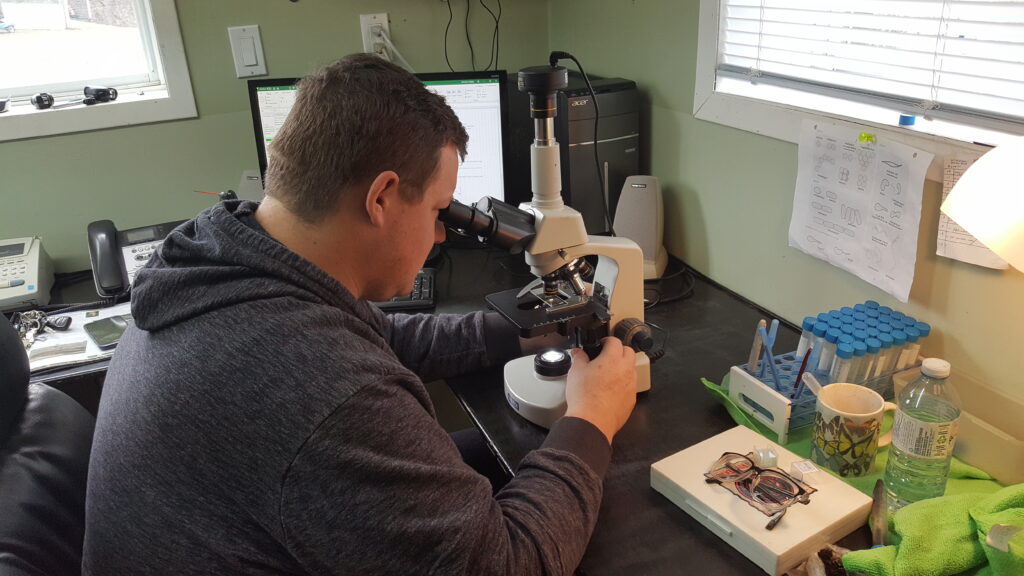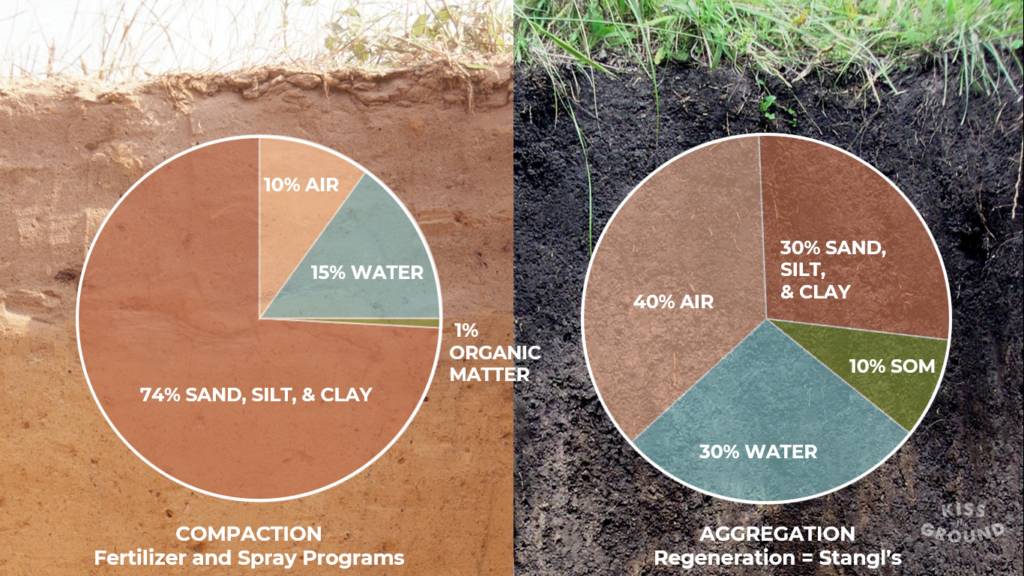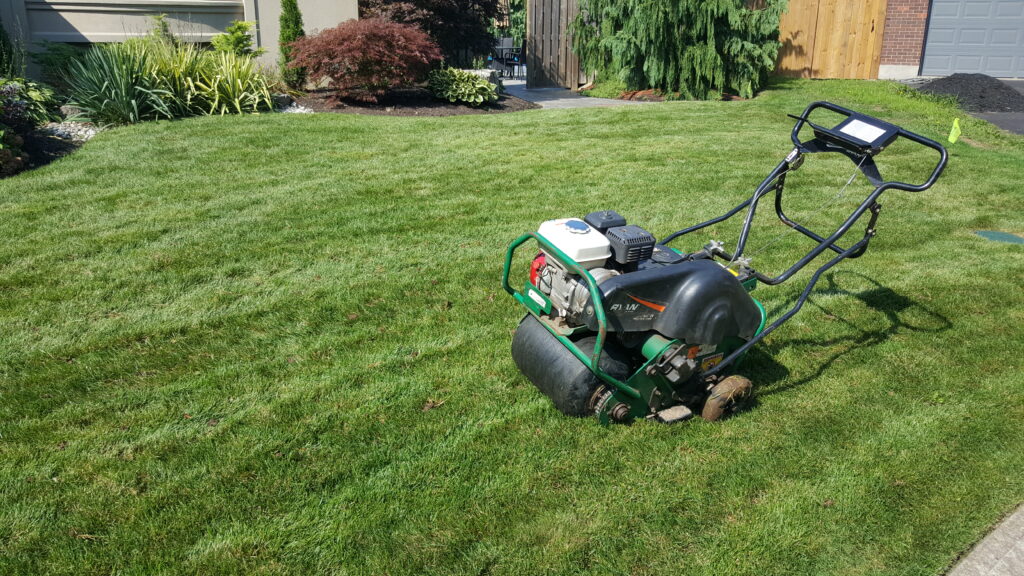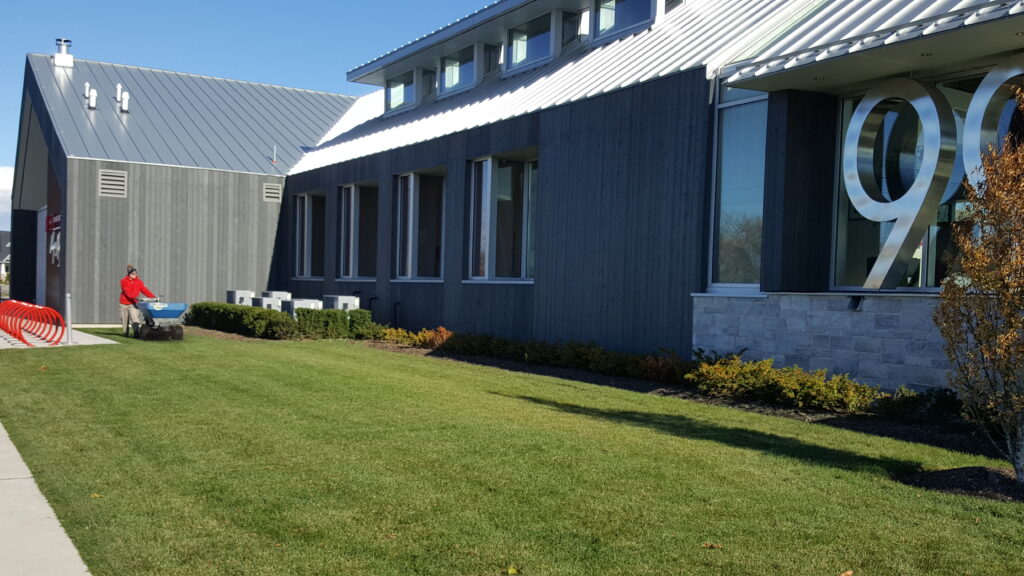Are you struggling to achieve the lush, vibrant lawn you’ve always dreamed of, despite your best efforts to embrace regenerative lawn care practices? If so, you’re not alone. Many homeowners face challenges in transitioning their yards to regenerative systems, but fear not – we’re here to help! In this guide, we’ll unravel some of the mysteries of regenerative lawn care and provide practical strategies for unlocking the full potential of your outdoor space.

Understanding Soil Health: At the core of effective regenerative lawn care practices lies a deep understanding of soil health. Before we can effectively address any issues with your lawn, it’s crucial to gain insight into the soil beneath it. Have you taken the time to measure your soil’s health using tools like a microscope, penetrometer, infiltration test or jar test? As well take pictures all along the way, we forget where we started but see where we are at. These invaluable tools provide valuable information about soil structure, microbial activity, and organic matter content – all of which are fundamental components of a thriving lawn ecosystem.

It’s essential to recognize that slow progress in your lawn may stem from a lack of comprehensive soil assessment. Are you taking core samples or using a shovel to visually inspect the soil profile? Understanding the current state of your soil, including its organic matter levels, can help you benchmark progress and identify any underlying legacy issues that may be hindering your lawn’s health.
Assessing Legacy Issues: Many homeowners overlook the impact of legacy issues on their lawn’s health. These can include past chemical applications, compacted soil, and imbalanced nutrient levels. By identifying and addressing these legacy issues, we can pave the way for true regenerative growth.
Optimizing Soil Amendments: While adding compost is a fantastic first step, not all compost is created equal. Have you verified the quality of your compost through soil health calculations? Additionally, consider incorporating soil amendments like compost extracts to supercharge microbial activity and nutrient cycling in your soil.

Aerating and Overseeding: Aeration and overseeding play crucial roles in fostering a resilient and vibrant lawn ecosystem. Aeration, with its light disturbance, accelerates regenerative processes by loosening compacted soil and promoting enhanced nutrient absorption. Meanwhile, overseeding introduces a diverse array of seed varieties, enriching the soil microbiome and enhancing the allopathic and rhizophagy cycles. Together, these practices promote healthy root growth and increase plant diversity, leading to a more resilient and thriving lawn.
Identifying Deficiencies: Nutrient deficiencies can significantly affect your lawn’s growth and resilience, serving as valuable clues to the health of your soil. While deficiencies in common minerals like carbon, calcium, phosphorus, and potassium are often recognized, it’s important to note that nutrient imbalances can manifest differently in your lawn. By closely observing the diversity of plants/weeds thriving in your lawn, you can gain valuable insights into specific mineral deficiencies or abundances. Rather than relying solely on soil chemistry tests, this approach allows you to interpret the signs exhibited by your lawn’s vegetation and tailor your management strategies accordingly. Conducting a thorough assessment of your lawn’s needs indicated by your plants enables you to take targeted action to optimize soil aggregation, biological activity for the plants plant health and vitality, fostering a more resilient and sustainable lawn ecosystem
Promoting Photosynthesis and Rhizophagy: Photosynthesis is the lifeblood of your lawn, fueling plant growth and vitality. By increasing photosynthetic activity through practices like increasing exudates and promoting the rhizophagy cycle, you can unlock the full potential of your lawn’s natural energy production.
In conclusion, regenerative lawn care is a journey of discovery and transformation. By understanding some of the principles of soil health, addressing legacy issues, optimizing soil amendments, and promoting plant vitality, you can unlock the secrets to a thriving lawn ecosystem. For more in-depth insights and practical tips, be sure to explore our archive of over 200 blogs on regenerative lawn care and soil health (Unlocking the secrets: https://www.stangls.com/blog/). Together, let’s unlock the full potential of your lawn and create a vibrant, resilient outdoor space for generations to come.
